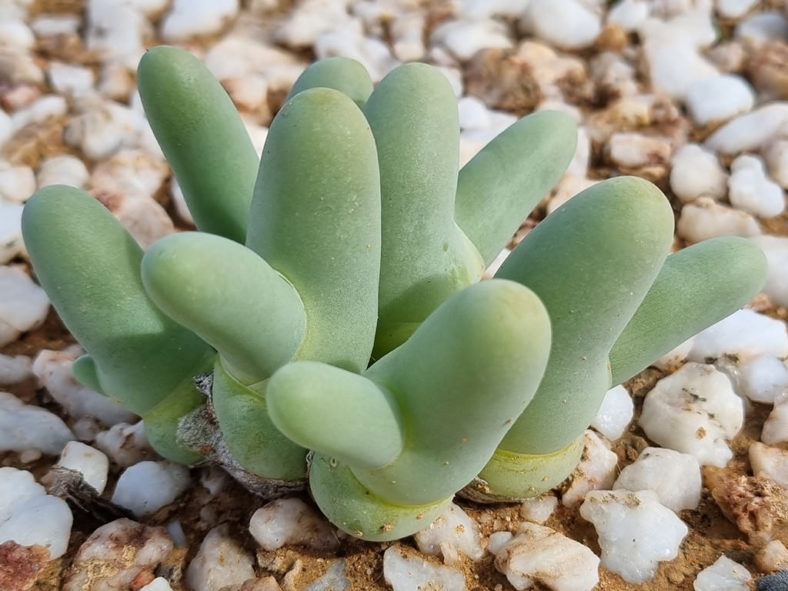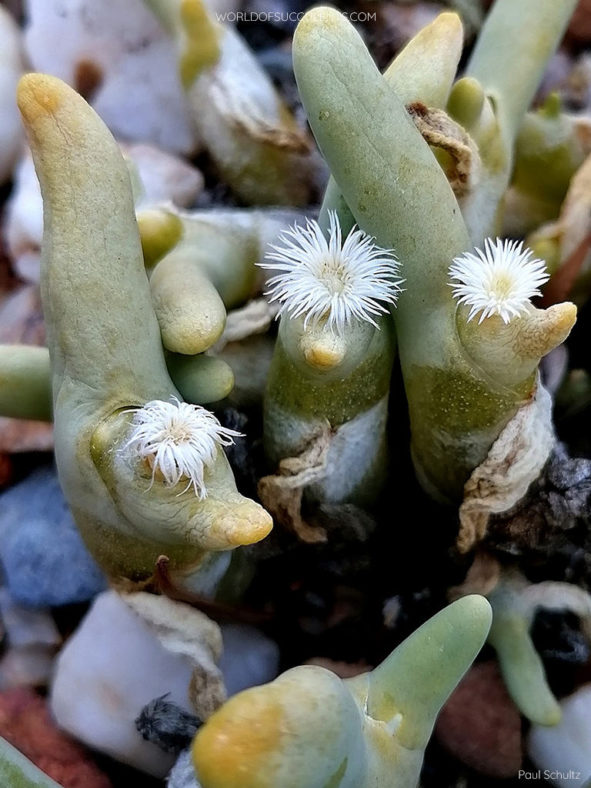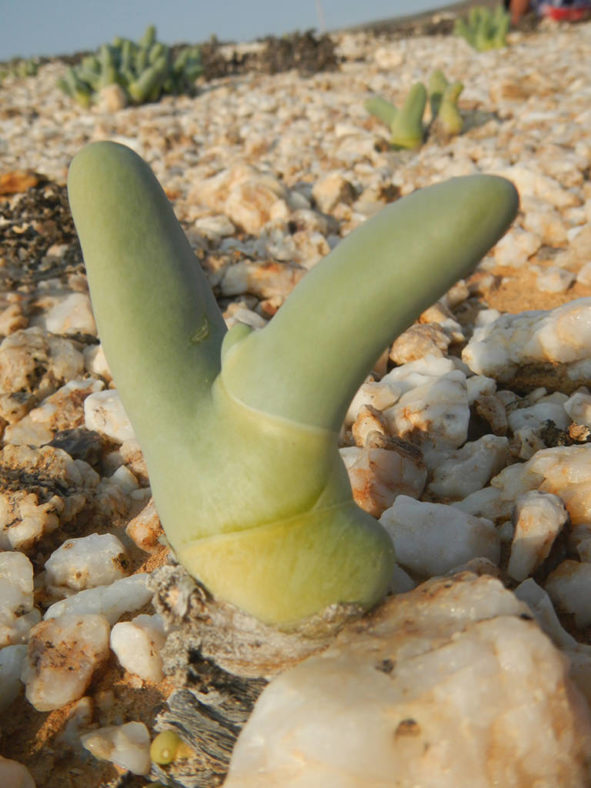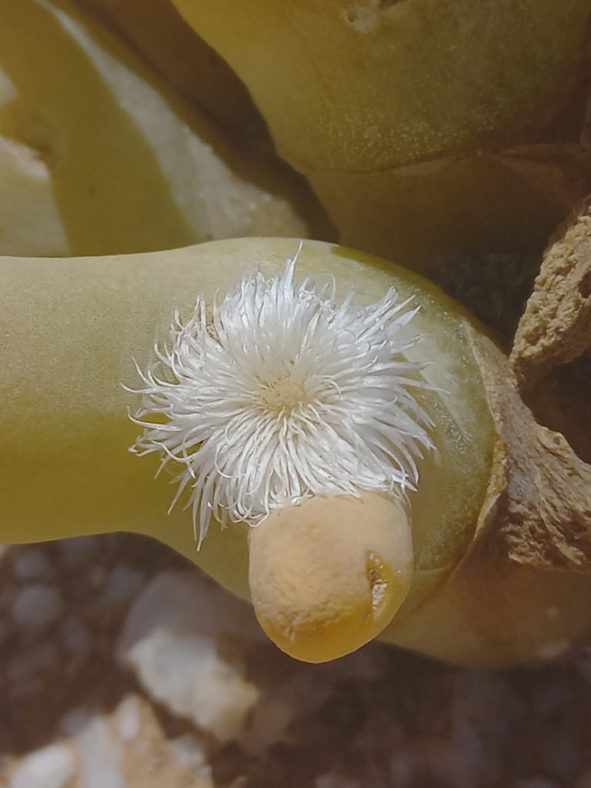Scientific Name
Mesembryanthemum digitatum Aiton
Common Name(s)
Finger-and-thumb Plant, Finger Fig, Finger Plant, Hitchhiker
Synonym(s)
Dactylopsis digitata, Gibbaeum digitiforme, Mesembryanthemum digitatum subsp. digitatum, Mesembryanthemum digitiforme, Phyllobolus digitatus
Scientific Classification
Family: Aizoaceae
Subfamily: Mesembryanthemoideae
Genus: Mesembryanthemum
Etymology
The specific epithet "digitatum (dig-ee-TAH-tum)" means "digitate; having fingers or toes" and refers to the appearance of the species.
Origin
Mesembryanthemum digitatum is native to South Africa. It grows on exposed shale plains among white quartzite pebbles in the part of Knersvlakte in the Western Cape province, particularly between the Olifants River and Bocklandsberg.
Description
Mesembryanthemum digitatum, formerly known as Dactylopsis digitata, is a dwarf, clump-forming succulent with cylindrical leaves of unequal length, resembling a human hand with usually two, sometimes three, digits erect. It is thick-rooted with short branches and can grow up to 8 inches (20 cm) tall. The leaves are fleshy, smooth, and can reach up to 4 inches (10 cm) in length. The first one of the vegetative period is long, and the second one is shorter. The leaves dry out completely, providing a protective cover over stem parts in the resting season.
After winter growth, a small white flower appears from the slit between the two leaves. The solitary flower is white to cream and sometimes stays open for over three weeks before it withers. It can reach up to 0.8 inches (2 cm) in diameter. The fruit is a 5-locular capsule with light brown seeds.

How to Grow and Care for Mesembryanthemum digitatum
Light: This succulent needs bright light but does not like too much direct sun. A sunny windowsill where the plant receives 4 to 5 hours of direct sunlight during the early part of the day and partial shade during the afternoon is the perfect spot to grow your M. digitatum indoors.
Soil: M. digitatum thrives best in porous soil mixes that allow water to drain away quickly. Use a commercial potting mix specially designed for growing succulents, or make your own.
Temperature: High temperatures are not a problem for this plant as long as there is plenty of fresh air, but it is not a cold-hardy succulent. M. digitatum can withstand temperatures as low as 35 °F (1.7 °C). USDA Plant Hardiness Zones 10b to 11b, 35 to 50 °F (1.7 to 10 °C).
Watering: M. digitatum requires little or no water when it goes dormant, usually in summer. When it begins to grow again in fall, it is safe to water deeply, allowing the soil to dry before between waterings. If leaves start to wrinkle during active growth, your plant needs water.
Fertilizing: This small succulent is a light feeder and does not need fertilizer if repotted every two years.
Repotting: This small succulent will stay happy in the same pot for several decades. The common reason for repotting is to divide or to give the plant a larger growing space. The best time to repot M. digitatum is at the beginning of the active growth period, but the repotting can be done almost any time while the plant is actively growing.
Propagation: This species is usually grown from seeds. It is also easily propagated by division. The best time to divide M. digitatum is in late summer before it begins to break dormancy. Sow the seeds in fall in a pot with a well-drained soil mix.
Learn more at How to Grow and Care for Mesembs.
Toxicity of Mesembryanthemum digitatum
M. digitatum is considered non-toxic to humans and pets.
Links
- Back to genus Mesembryanthemum
- Succupedia: Browse succulents by Scientific Name, Common Name, Genus, Family, USDA Hardiness Zone, Origin, or cacti by Genus
Photo Gallery
Click on a photo to see a larger version.


